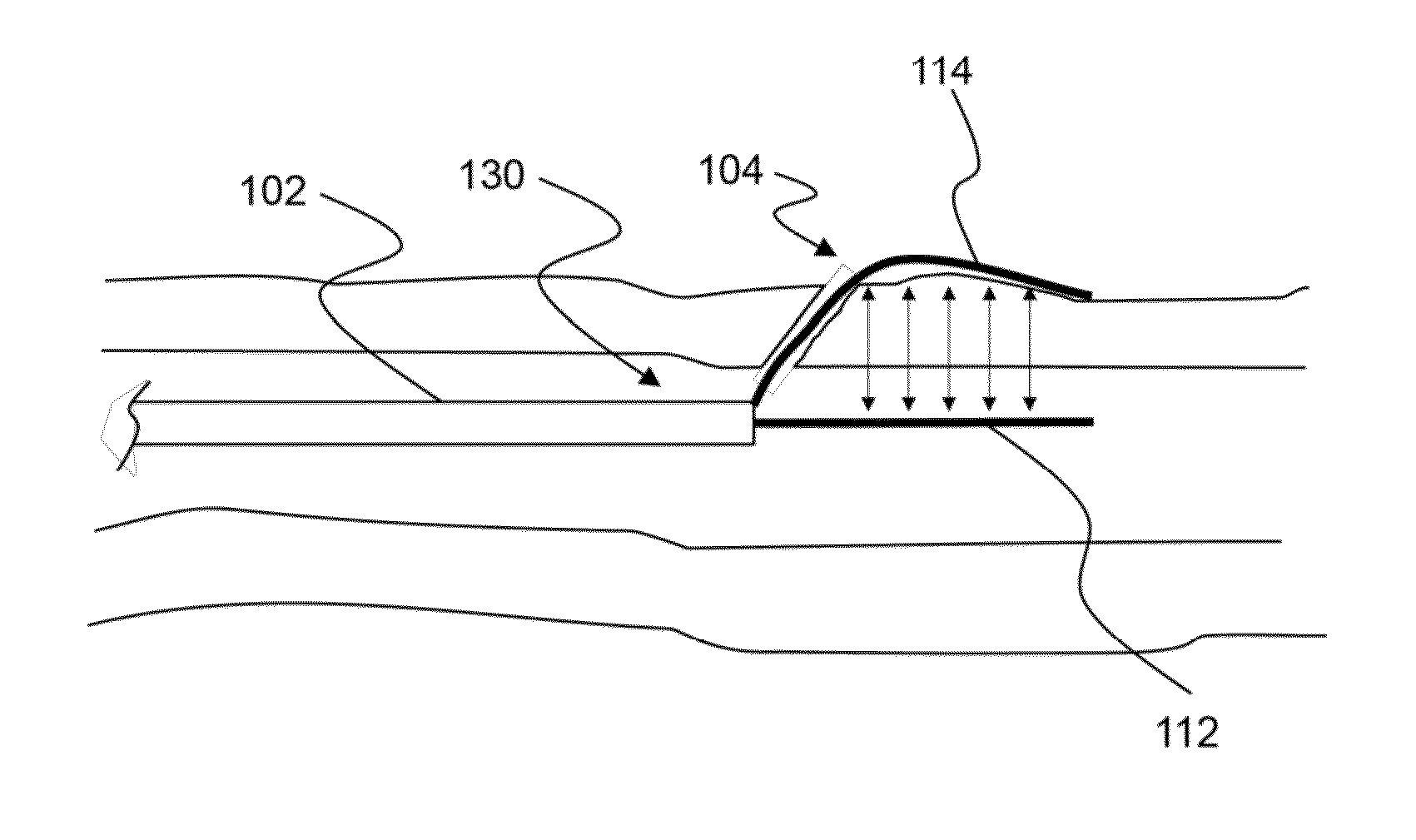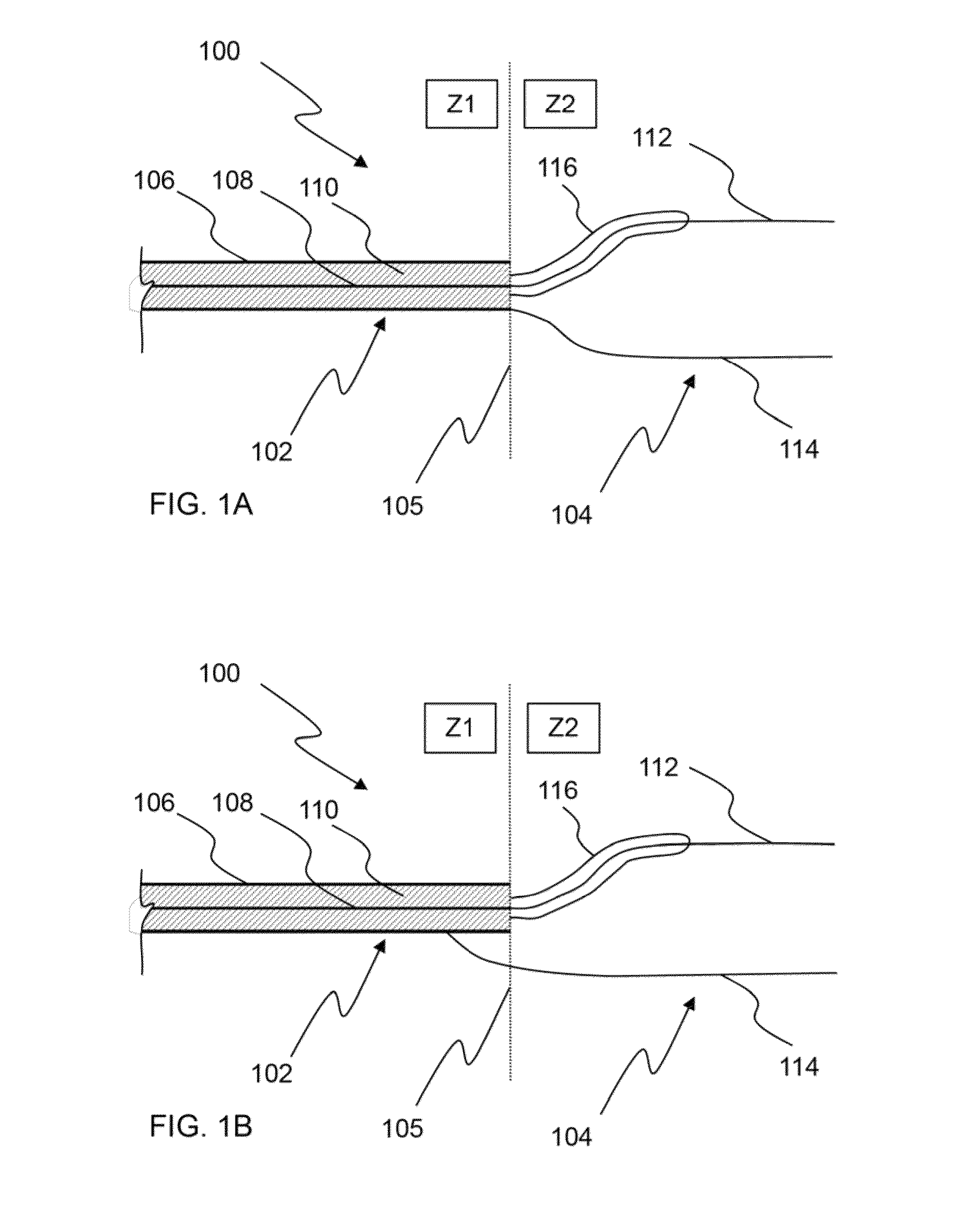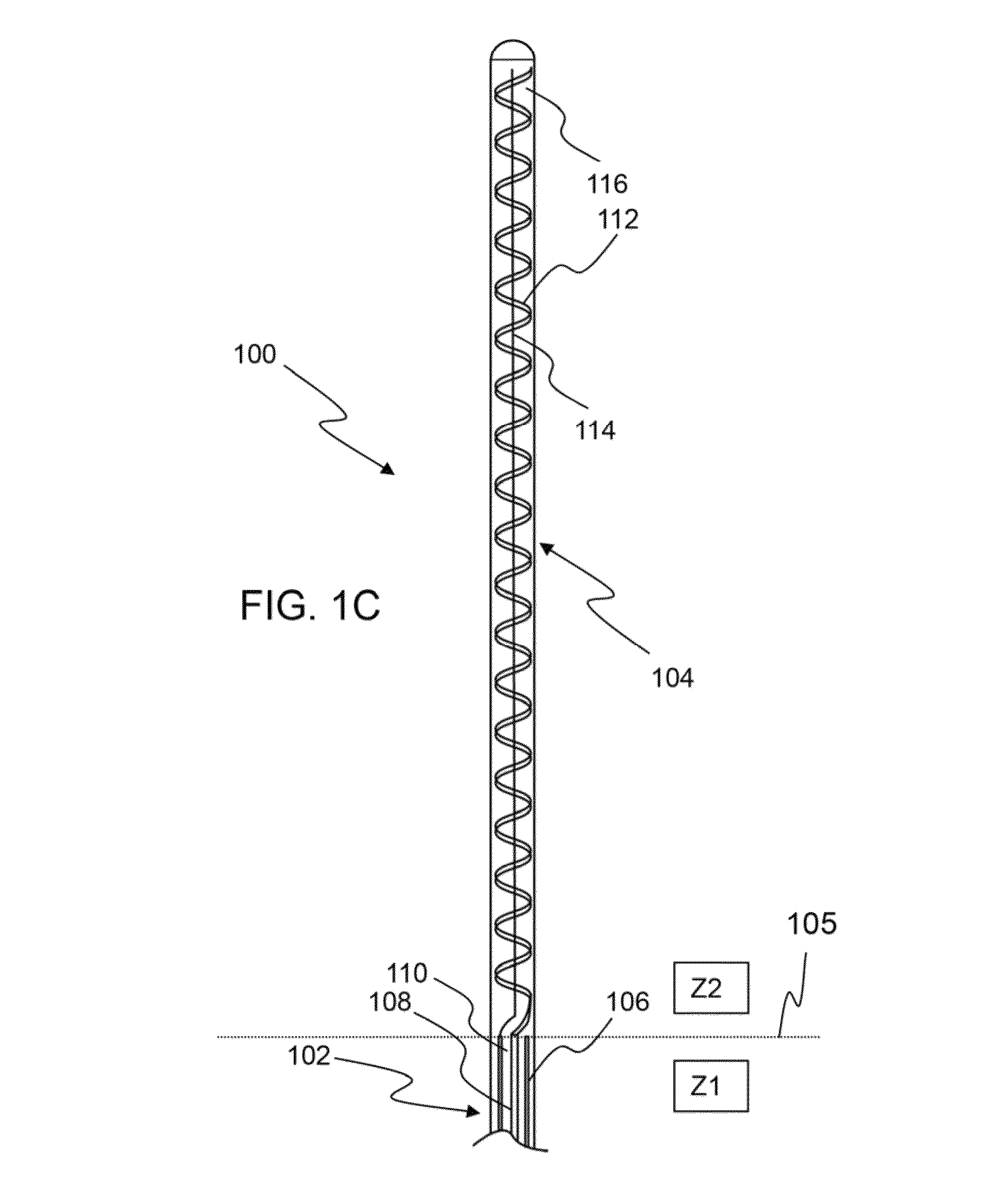Methods and devices for applying energy to bodily tissues
a technology of bodily tissues and energy, applied in the field of medical elements, can solve the problems of unmet needs for improved devices and methods, non-uniform lesion profiles along the length of antennas, device shaft heating, etc., and achieve the effect of improving the cosmetic appearance of skin
- Summary
- Abstract
- Description
- Claims
- Application Information
AI Technical Summary
Benefits of technology
Problems solved by technology
Method used
Image
Examples
Embodiment Construction
[0097]This specification discloses multiple antenna designs, systems, structures and devices, and associated methods, which illustrate various aspects of the invention. The various microwave antennas and the microwave engineering principles disclosed herein may be used in a variety of non-medical and medical applications. The near field of the microwave antennas disclosed herein may be used on target materials such as food, industrial products, semiconductors, etc. The near field of the microwave antennas disclosed herein may be used for cooking or heating foods, in industrial processes for drying and curing products, in semiconductor processing techniques to generate plasma for processes such as reactive ion etching and plasma-enhanced chemical vapor deposition (PECVD). While these systems, structures and devices, and associated methods, are discussed primarily in terms of some particular clinical applications (e.g. ablating cardiac tissue to treat arrhythmias, endometrial ablation...
PUM
 Login to View More
Login to View More Abstract
Description
Claims
Application Information
 Login to View More
Login to View More - R&D
- Intellectual Property
- Life Sciences
- Materials
- Tech Scout
- Unparalleled Data Quality
- Higher Quality Content
- 60% Fewer Hallucinations
Browse by: Latest US Patents, China's latest patents, Technical Efficacy Thesaurus, Application Domain, Technology Topic, Popular Technical Reports.
© 2025 PatSnap. All rights reserved.Legal|Privacy policy|Modern Slavery Act Transparency Statement|Sitemap|About US| Contact US: help@patsnap.com



